Abstract
A modified assimilable organic carbon (AOC) bioassay is proposed. We evaluated all aspects of the AOC bioassay technique, including inoculum, incubation water, bioassay vessel, and enumeration technique. Other concerns included eliminating the need to prepare organic carbon-free glassware and minimizing the risks of bacterial and organic carbon contamination. Borosilicate vials (40 ml) with Teflon-lined silicone septa are acceptable incubation vessels. Precleaned vials are commercially available, and the inoculum can be injected directly through the septa. Both bioassay organisms, Pseudomonas fluorescens P-17 and Spirillum sp. strain NOX, are available from the American Type Culture Collection and grow well on R2A agar, making this a convenient plating medium. Turbid raw waters need to be filtered prior to an AOC analysis. Glass fiber filters used with either a peristaltic pump or a syringe-type filter holder are recommended for this purpose. A sampling design that emphasizes replication of the highest experimental level, individual batch cultures, is the most efficacious way to reduce the total variance associated with the AOC bioassay. Quality control for the AOC bioassay includes an AOC blank and checks for organic carbon limitation and inhibition of the bioassay organisms.
Full text
PDF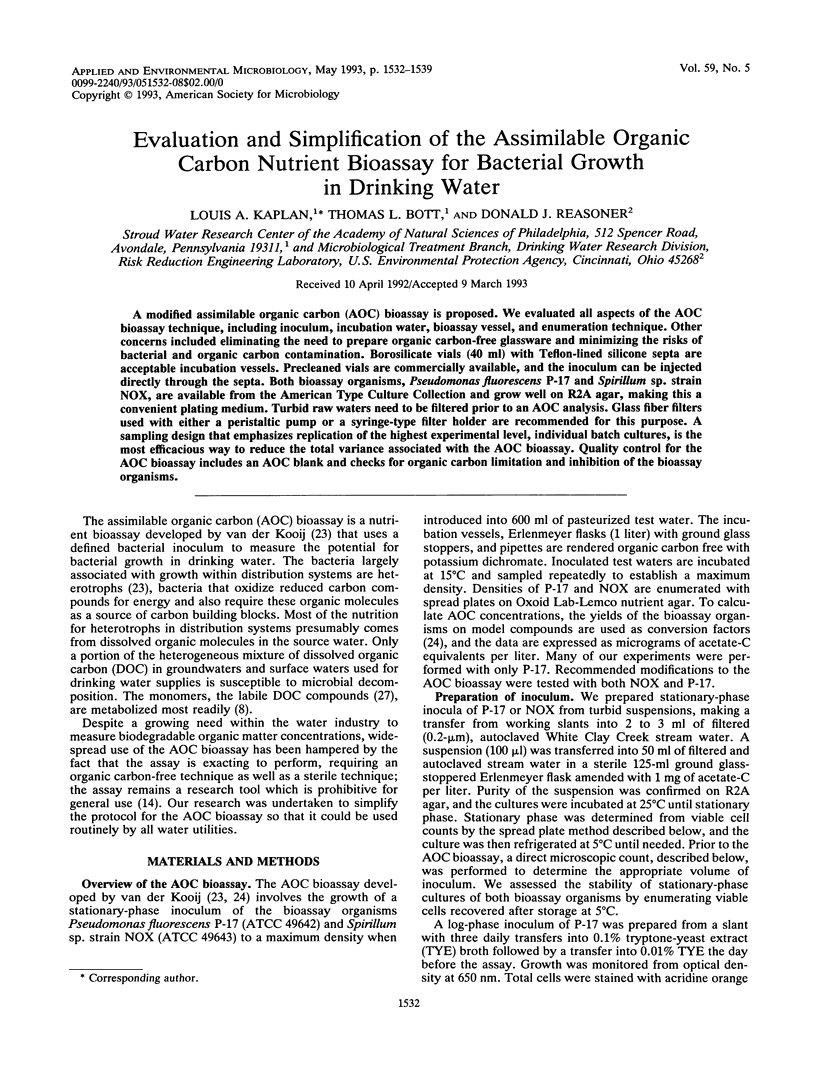
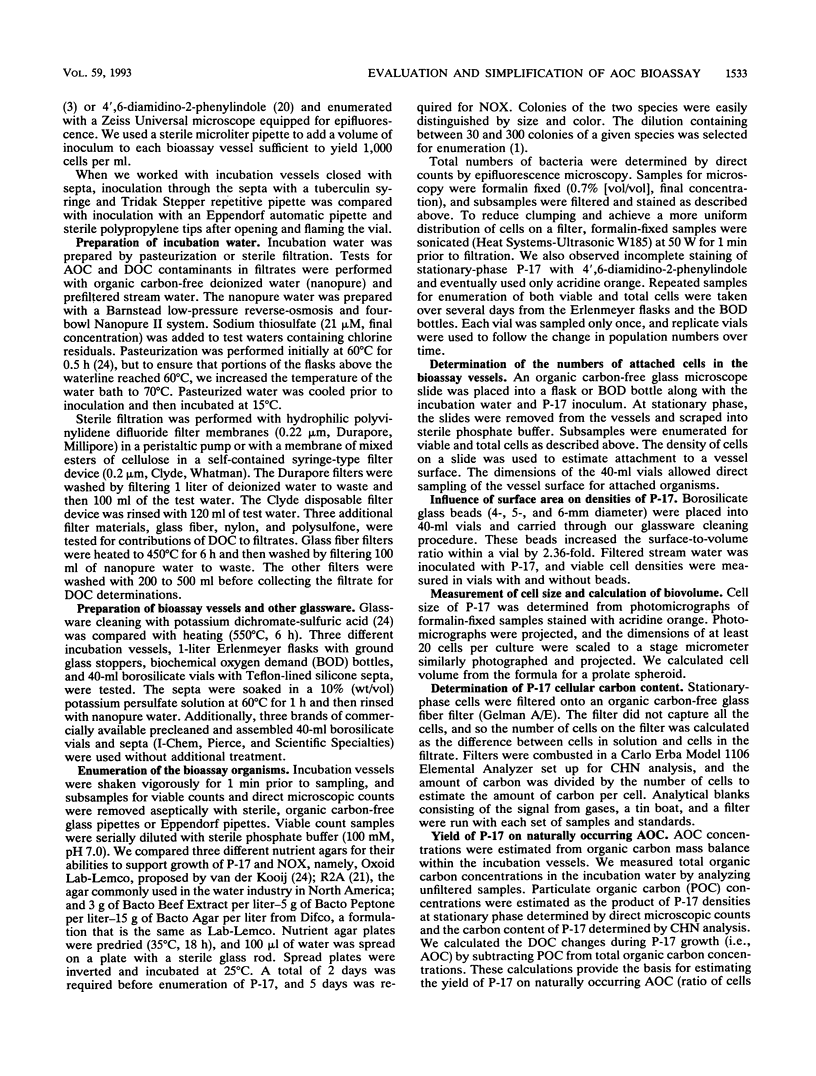
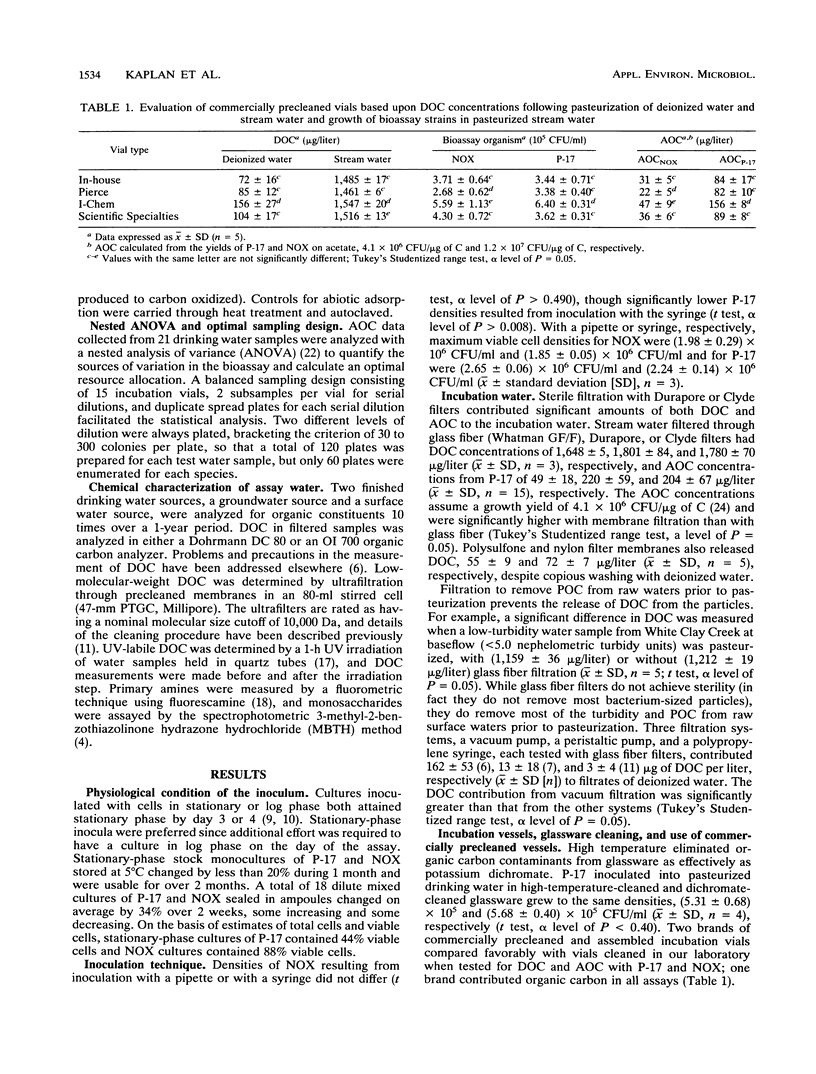
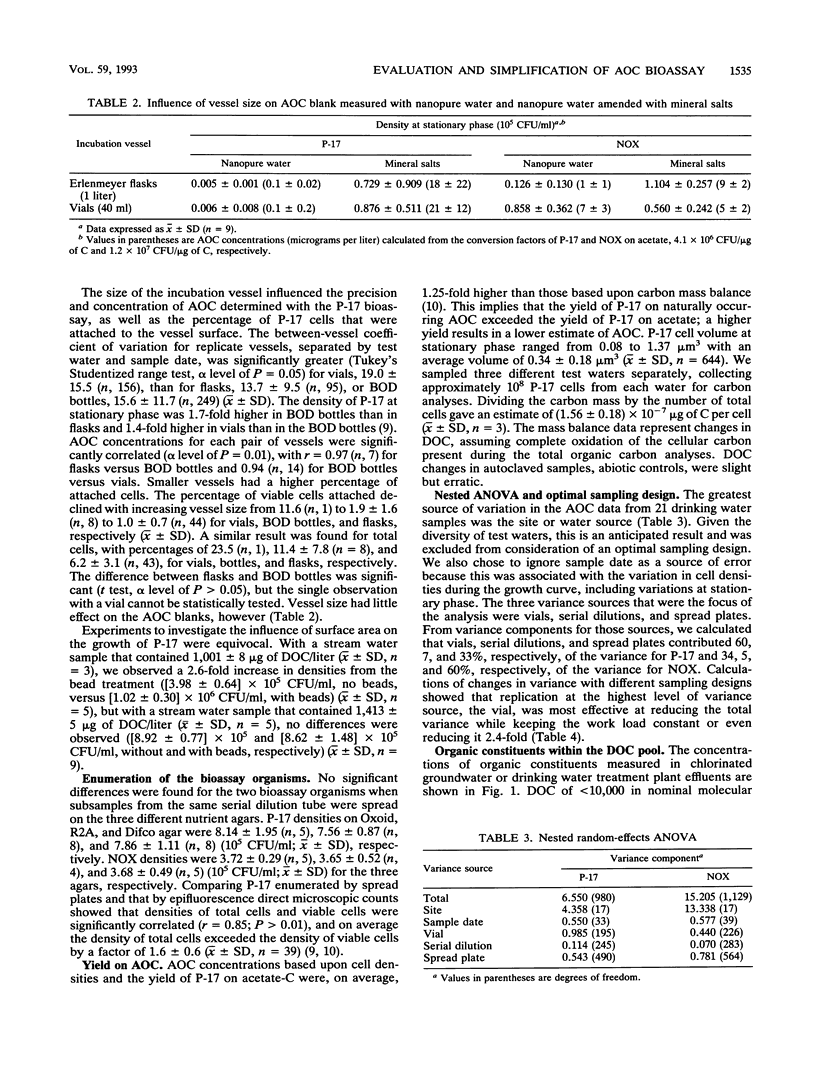
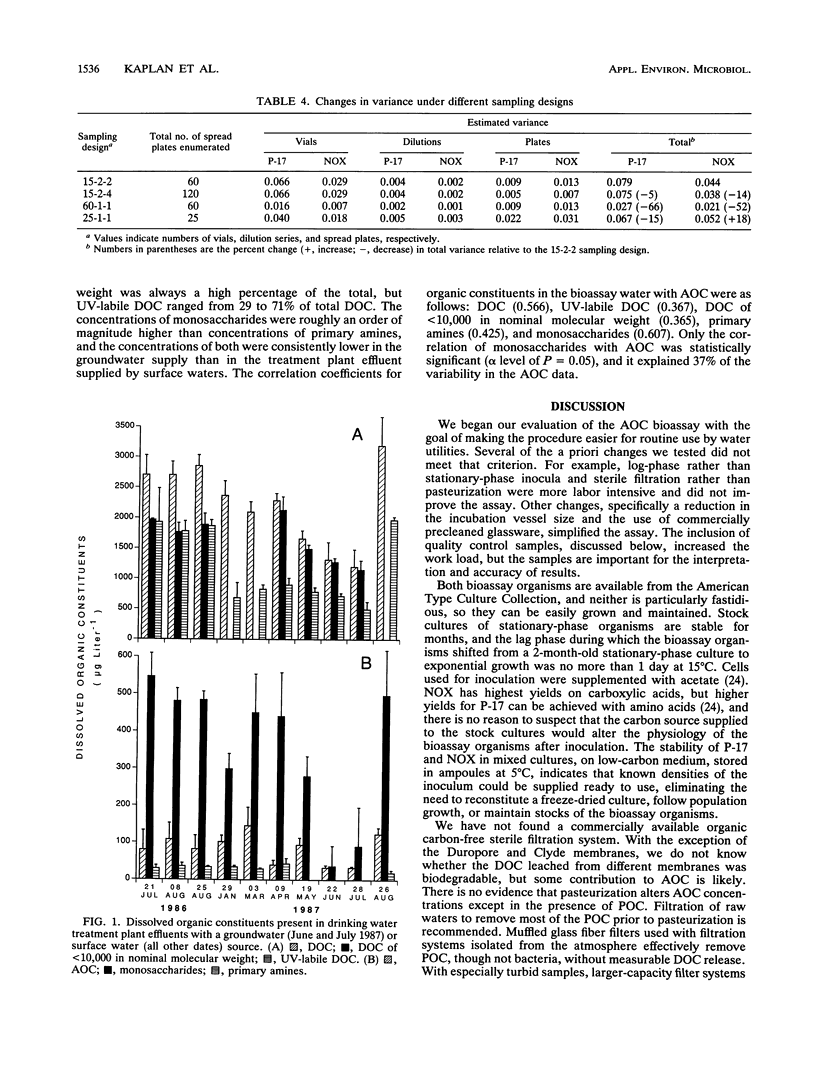
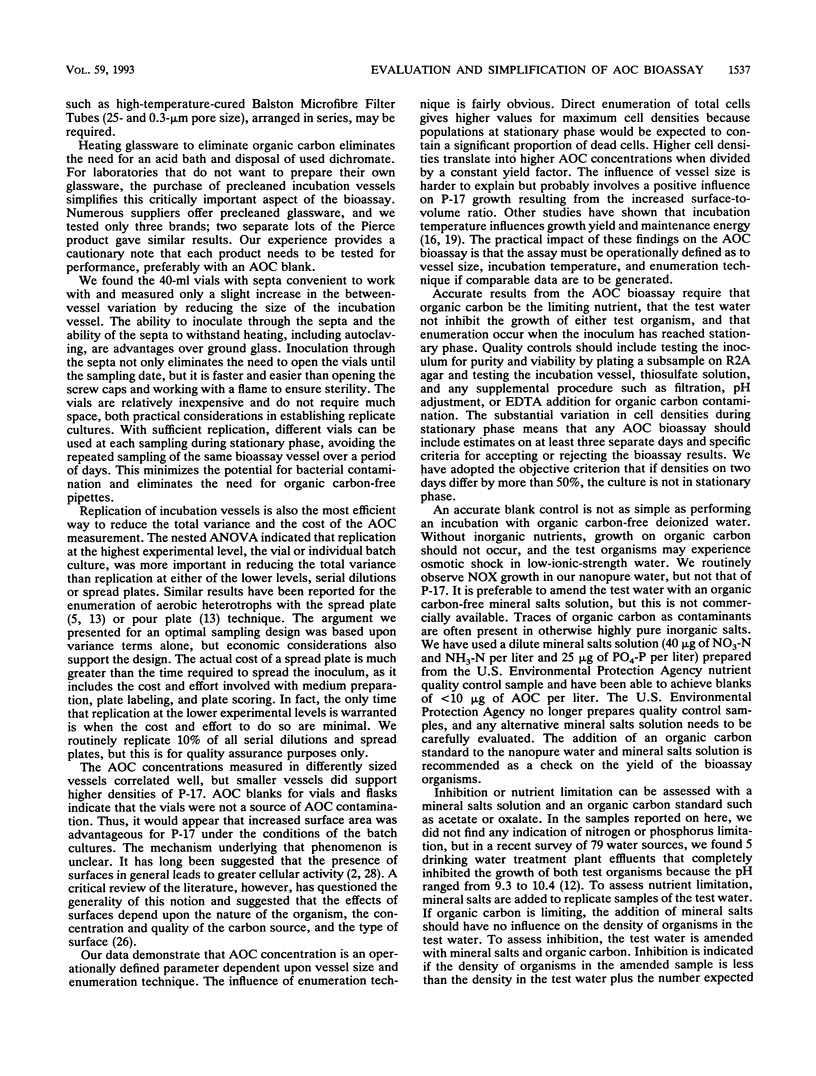
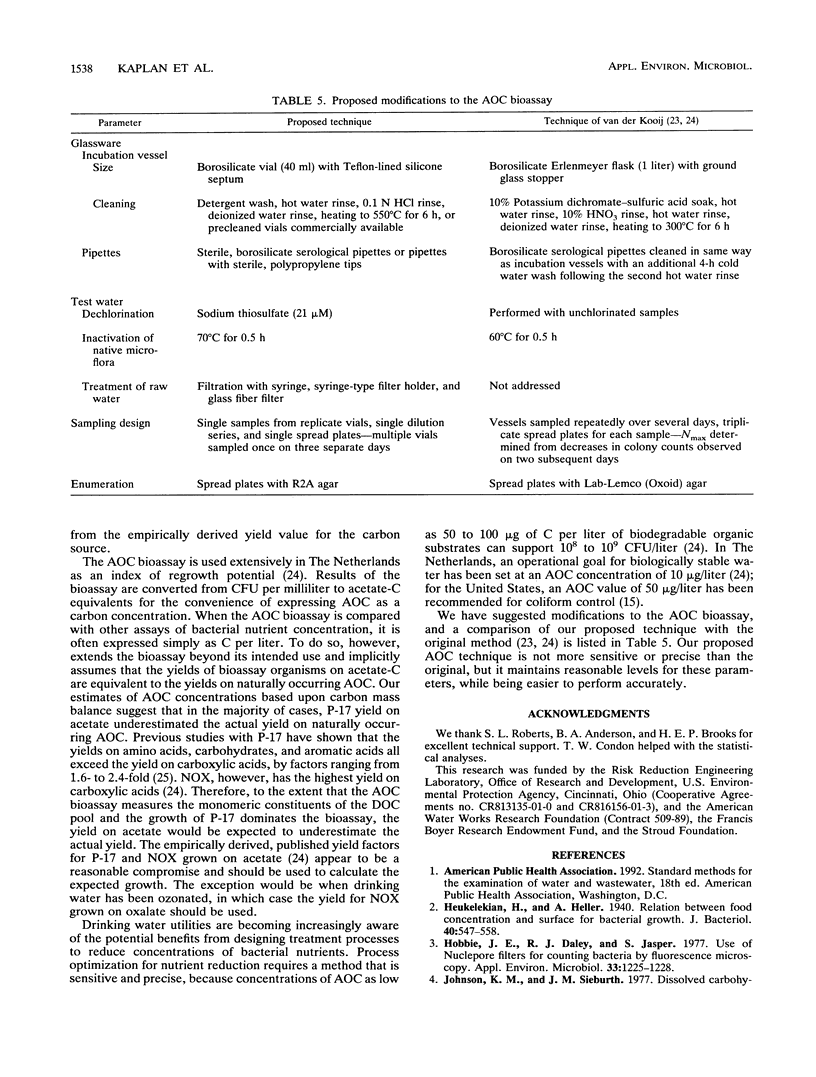
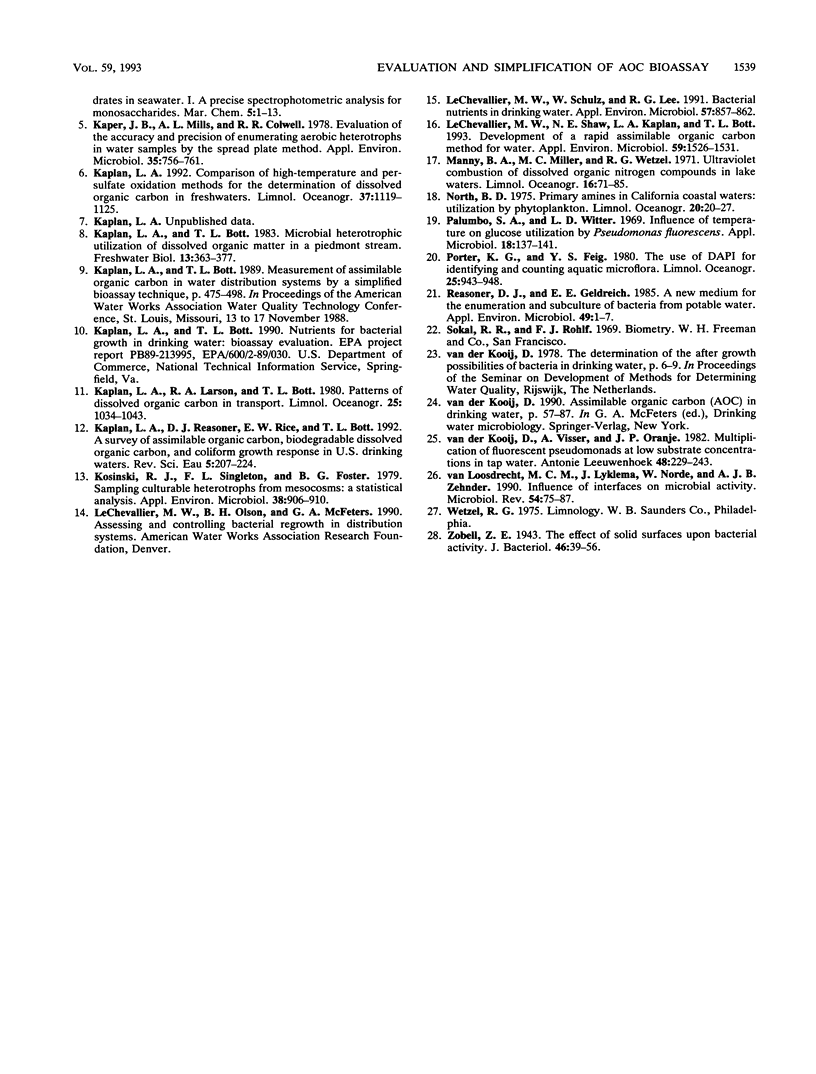
Selected References
These references are in PubMed. This may not be the complete list of references from this article.
- Heukelekian H., Heller A. Relation between Food Concentration and Surface for Bacterial Growth. J Bacteriol. 1940 Oct;40(4):547–558. doi: 10.1128/jb.40.4.547-558.1940. [DOI] [PMC free article] [PubMed] [Google Scholar]
- Hobbie J. E., Daley R. J., Jasper S. Use of nuclepore filters for counting bacteria by fluorescence microscopy. Appl Environ Microbiol. 1977 May;33(5):1225–1228. doi: 10.1128/aem.33.5.1225-1228.1977. [DOI] [PMC free article] [PubMed] [Google Scholar]
- Kaper J. B., Mills A. L., Colwell R. R. Evaluation of the accuracy and precision of enumerating aerobic heterotrophs in water samples by the spread plate method. Appl Environ Microbiol. 1978 Apr;35(4):756–761. doi: 10.1128/aem.35.4.756-761.1978. [DOI] [PMC free article] [PubMed] [Google Scholar]
- Kosinski R. J., Singleton F. L., Foster B. G. Sampling culturable heterotrophs from microcosms: a statistical analysis. Appl Environ Microbiol. 1979 Nov;38(5):906–910. doi: 10.1128/aem.38.5.906-910.1979. [DOI] [PMC free article] [PubMed] [Google Scholar]
- LeChevallier M. W., Schulz W., Lee R. G. Bacterial nutrients in drinking water. Appl Environ Microbiol. 1991 Mar;57(3):857–862. doi: 10.1128/aem.57.3.857-862.1991. [DOI] [PMC free article] [PubMed] [Google Scholar]
- Lechevallier M. W., Shaw N. E., Kaplan L. A., Bott T. L. Development of a rapid assimilable organic carbon method for water. Appl Environ Microbiol. 1993 May;59(5):1526–1531. doi: 10.1128/aem.59.5.1526-1531.1993. [DOI] [PMC free article] [PubMed] [Google Scholar]
- Palumbo S. A., Witter L. D. Influence of temperature on glucose utilization by Pseudomonas fluorescens. Appl Microbiol. 1969 Aug;18(2):137–141. doi: 10.1128/am.18.2.137-141.1969. [DOI] [PMC free article] [PubMed] [Google Scholar]
- Reasoner D. J., Geldreich E. E. A new medium for the enumeration and subculture of bacteria from potable water. Appl Environ Microbiol. 1985 Jan;49(1):1–7. doi: 10.1128/aem.49.1.1-7.1985. [DOI] [PMC free article] [PubMed] [Google Scholar]
- Zobell C. E. The Effect of Solid Surfaces upon Bacterial Activity. J Bacteriol. 1943 Jul;46(1):39–56. doi: 10.1128/jb.46.1.39-56.1943. [DOI] [PMC free article] [PubMed] [Google Scholar]
- van Loosdrecht M. C., Lyklema J., Norde W., Zehnder A. J. Influence of interfaces on microbial activity. Microbiol Rev. 1990 Mar;54(1):75–87. doi: 10.1128/mr.54.1.75-87.1990. [DOI] [PMC free article] [PubMed] [Google Scholar]
- van der Kooij D., Visser A., Oranje J. P. Multiplication of fluorescent pseudomonads at low substrate concentrations in tap water. Antonie Van Leeuwenhoek. 1982;48(3):229–243. doi: 10.1007/BF00400383. [DOI] [PubMed] [Google Scholar]


